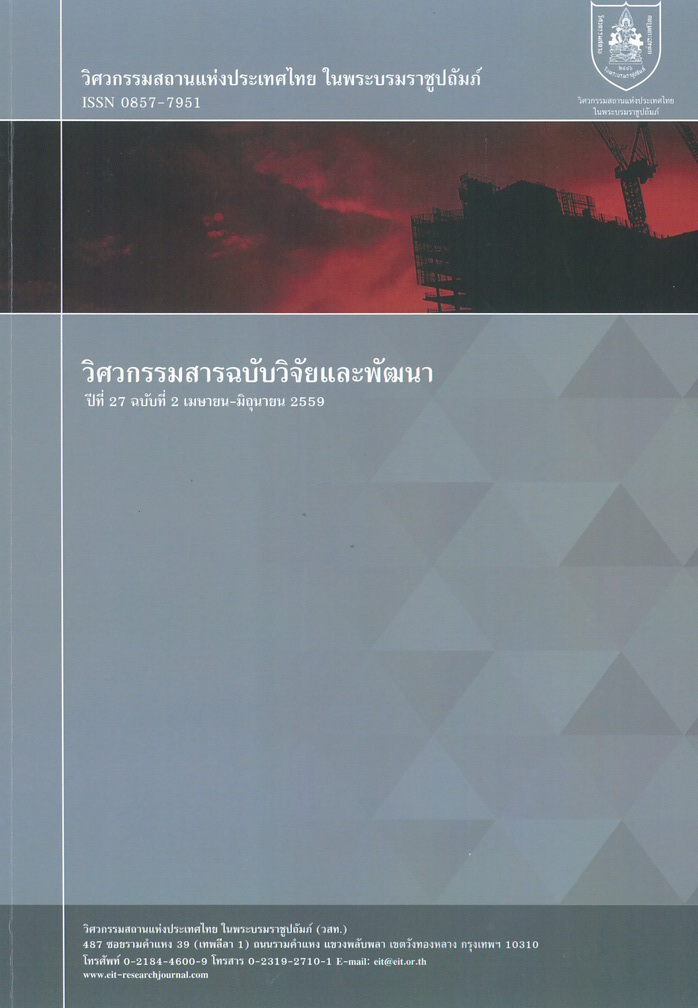Microstructure and Wear Resistance of Hard-facing Weld Metal on FC25 Grey Cast Iron Surface
Main Article Content
Abstract
บทความนี้มีจุดประสงค์ในการศึกษาอิทธิพลตัวแปรการเชื่อมอาร์คลวดหุ้มฟลักซ์ที่มีผลต่อสมบัติทางกลและโครงสร้างจุลภาคของโลหะเชื่อมพอกแข็งบนผิวเหล็กหล่อ FC25 ผลการทดลองโดยสรุปพบว่า การเพิ่มกระแสเชื่อมและปริมาณของโครเมียมและคาร์บอนในโลหะเชื่อมส่งผลต่อการเพิ่มขนาดแนวเชื่อมและความหนาของชั้นหล่อขาวภายในแนวเชื่อมซึ่งส่งผลทำให้ความแข็งและความเปราะของโลหะเพิ่มขึ้นได้ การเพิ่มปริมาณของคาร์บอนและโครเมียมในลวดเชื่อมทำให้เกิดเฟสรูปร่างคล้ายเข็มซึ่งเป็นเฟสเสริมแรงในโลหะเชื่อม อย่างไรก็ตามการเพิ่มซิลิกอนในลวดเชื่อมทำให้สมบัติทางกลของโลหะเชื่อมลดลงเนื่องจากการลดลงของเฟสรูปร่างคล้ายเข็มในพื้นหลักโลหะเชื่อม ตัวแปรการเชื่อมที่เหมาะสมทำให้เกิดการสูญเสียน้ำหนักต่ำสุด 0.0931% คือ กระแสเชื่อม 110A และลวดเชื่อม H600
This paper aimed to study the effect of hard-facing welding on mechanical properties and microstructure of hard-facing weld metal on JIS-FC25 grey cast iron surface. The summarized results are as follows. Increase of the welding current and the content of Cr and C in the welding electrode affected to increase the welding bead size and the white cast layer that could increase the hardness and the brittleness of the weldment. Increase of chromium and carbon in the electrode produced the needle-like phase shape that was a reinforced phase in the weld metal. However, the increase of the silicon in the electrode deteriorated the mechanical properties of the weld because of it decreased the needle-like phase in the weld matrix. The optimized welding parameter that produced a minimum weight loss of 0.0931% was the welding current of 110A and the H600 electrode.
Article Details
The published articles are copyright of the Engineering Journal of Research and Development, The Engineering Institute of Thailand Under H.M. The King's Patronage (EIT).


